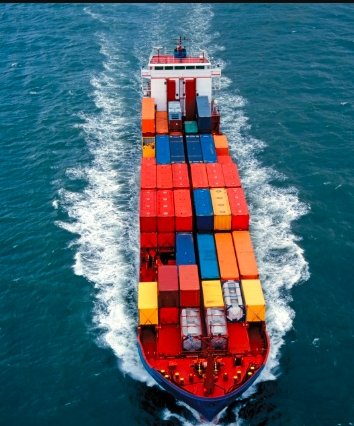Scotland is making waves in the UK’s export scene, standing tall as home to 15,000 exporting firms and ranking seventh among British regions for overseas trade. This comes amid fresh optimism after the UK government secured a landmark trade deal with India, promising export opportunities worth nearly £6 billion.
Despite global trade tensions and economic uncertainties, Scotland’s exporters are showing resilience. A deep dive into official data from the Office for National Statistics, analysed by business experts at money.co.uk, reveals how Scotland fits into the bigger picture of Britain’s international trade landscape.
Scotland’s Export Scene in Context: How It Stacks Up Nationally
Let’s get the numbers straight. London leads the pack with a whopping 78,300 businesses exporting abroad — that’s one in every six companies there. Following London, the South East boasts over 50,000 exporting firms, thanks in part to its proximity to Europe and major ports like Southampton and Dover.
Scotland sits comfortably in seventh place with 15,000 firms engaged in overseas trade. That’s just under 10% (9.8%) of all Scottish businesses. To put it simply, nearly 1 in 10 companies in Scotland are sending goods or services beyond the UK.
What’s fascinating is the variety of sectors these businesses cover — from food and drink to technology and manufacturing. The international trade spirit is alive and kicking north of the border. Not bad for a country often thought of as more inward-looking economically.

Interestingly, the regions just above Scotland include the South West and Yorkshire and The Humber, with the North West and East Midlands close behind. Wales, meanwhile, trails with just over 5,000 exporters, making Scotland a clear leader in the devolved nations.
This table gives a quick snapshot:
| Rank | Region | Exporting Firms | % of Businesses Exporting |
|---|---|---|---|
| 1 | London | 78,300 | 16.5% |
| 2 | South East | 50,200 | 12.7% |
| 3 | East of England | 30,600 | 11.7% |
| 4 | East Midlands | 18,300 | 10.9% |
| 5 | Yorkshire and Humber | 16,600 | 10.3% |
| 6 | South West | 21,900 | 10.0% |
| 7 | Scotland | 15,000 | 9.8% |
This shows just how significant Scotland’s contribution is, given its population size compared to these bigger regions.
Why Scotland’s Exporters Are Holding Their Ground
So, what’s behind this steady performance? Scotland’s exporters aren’t just riding a wave; they’re working hard to find new markets and products to sell abroad. A few factors are worth noting.
First, the Scottish food and drink sector continues to be a star performer. Whisky, salmon, and other speciality foods find eager buyers worldwide. The reputation for quality is strong, and many small and medium enterprises are cashing in on this global demand.
Then there’s the tech and innovation angle. Scottish firms in software, renewable energy tech, and engineering are tapping into overseas clients more than ever. Places like Edinburgh and Glasgow have become hubs for startups and scale-ups looking to expand internationally.
It helps that Scotland benefits from targeted government support programs encouraging export growth. Scottish Development International offers advice and connections to help companies reach markets in Europe, Asia, and beyond.
Despite Brexit uncertainties and trade friction with key partners, exporters here are adapting. This kind of resilience makes you wonder if Scotland is quietly building a more globally connected economy than many realize.
The Impact of the UK-India Trade Deal on Scottish Businesses
Fresh off the press is the UK’s recent trade deal with India — a biggie worth almost £6 billion in export opportunities. What does that mean for Scotland?
Quite a lot, actually. India is a growing market hungry for goods and services that Scotland can provide. From whisky and premium foods to financial and digital services, Scottish firms have a foot in the door.
Scottish exporters are now being encouraged to explore this opportunity seriously. The Indian market is large but complex. Still, companies that can navigate it might find a gold mine.
The deal could open new shipping routes, reduce tariffs, and smooth customs procedures, making Scottish products more competitive in India. For firms in Edinburgh and Aberdeen already exporting, this is welcome news. For those still eyeing overseas expansion, it might be the nudge they need.
It’s a reminder that while international trade can be tough, there are tangible wins if companies play their cards right.
Challenges Facing Scotland’s Exporters
It’s not all smooth sailing, though. Challenges persist, and Scottish exporters are not immune.
Global economic slowdowns, rising shipping costs, and supply chain disruptions have made exporting trickier. Some firms have scaled back overseas ambitions or taken longer to close deals.
Currency fluctuations, particularly the pound’s value, add uncertainty to pricing and profits. Plus, new regulatory requirements after Brexit still pose hurdles that require extra resources to manage.
For smaller businesses, the cost and complexity of exporting can be daunting. Many rely on local markets, even if international demand exists. That’s a missed opportunity some worry about.
Yet, the willingness to adapt and seek new markets is encouraging. Some exporters are shifting to e-commerce platforms, reaching customers directly with less overhead.
These efforts reflect a broader trend — Scottish businesses are neither passive nor stuck. They’re looking for ways to keep their heads above water and thrive.
What the Future Holds for Scotland’s Exporters
Looking ahead, the export landscape will keep changing. New markets in Asia, Africa, and the Americas beckon, alongside traditional partners in Europe.
Scotland’s exporters will need to stay nimble, invest in innovation, and build strong international relationships.
Government support, such as export grants and trade missions, will play a role. But ultimately, success will depend on companies’ ability to offer unique products and services that stand out globally.
With 15,000 firms already exporting, Scotland is far from a small player. Its contribution to the UK’s trade picture is significant and growing. The recent trade deal with India could be a major catalyst for growth if Scottish businesses seize the moment.
So yeah, Scotland’s export story isn’t just about numbers; it’s about ambition, grit, and looking beyond borders for opportunity. And in today’s tricky global economy, that’s something worth watching.


















